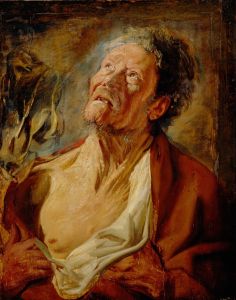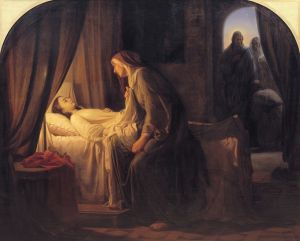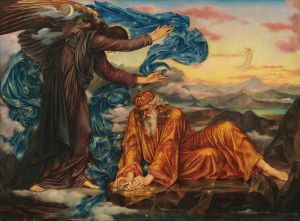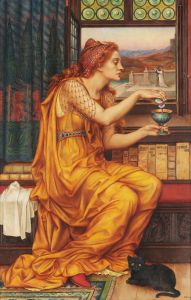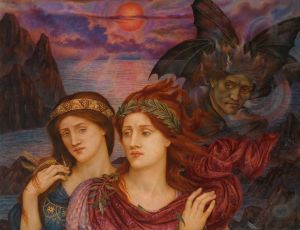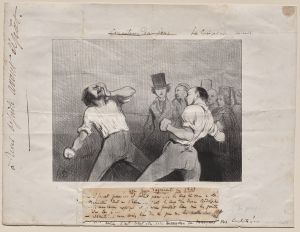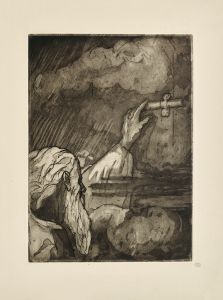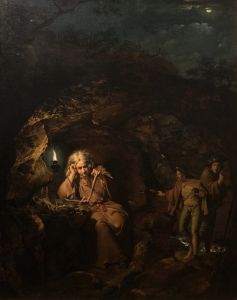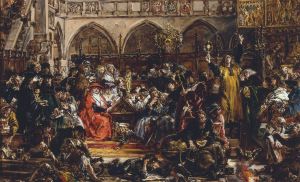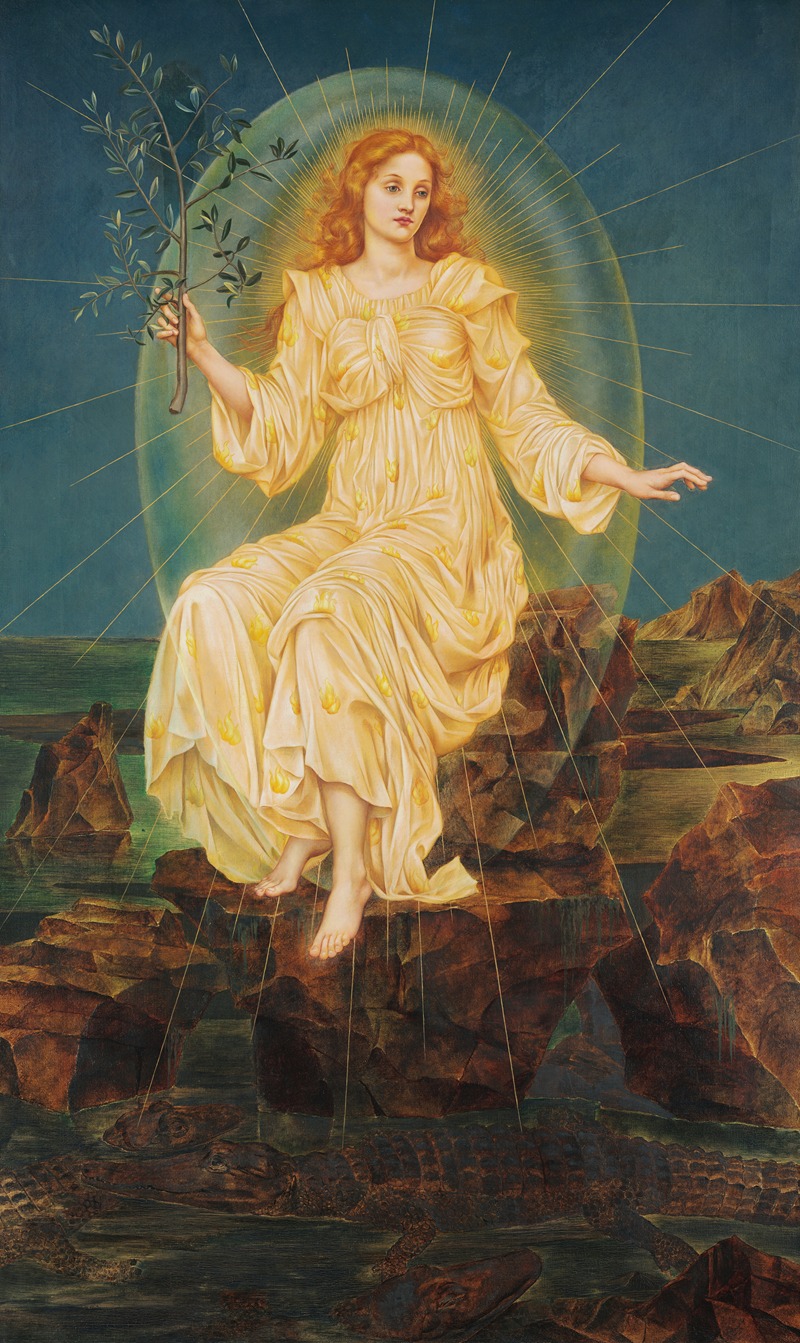
Lux in Tenebris
A hand-painted replica of Evelyn De Morgan’s masterpiece Lux in Tenebris, meticulously crafted by professional artists to capture the true essence of the original. Each piece is created with museum-quality canvas and rare mineral pigments, carefully painted by experienced artists with delicate brushstrokes and rich, layered colors to perfectly recreate the texture of the original artwork. Unlike machine-printed reproductions, this hand-painted version brings the painting to life, infused with the artist’s emotions and skill in every stroke. Whether for personal collection or home decoration, it instantly elevates the artistic atmosphere of any space.
Evelyn De Morgan's "Lux in Tenebris" is a significant work of art that exemplifies the artist's unique style and thematic focus. Evelyn De Morgan, an English painter associated with the later phase of the Pre-Raphaelite movement, was known for her allegorical and symbolic works that often explored themes of spirituality, feminism, and social justice. "Lux in Tenebris," which translates to "Light in Darkness," is a testament to these themes and showcases De Morgan's skill in combining rich symbolism with a distinctive aesthetic.
The painting, completed in 1895, depicts a female figure holding a torch, symbolizing the concept of enlightenment and hope amidst darkness. This central figure is often interpreted as a representation of truth or knowledge, illuminating the surrounding darkness and offering a beacon of hope. The use of light and dark in the painting is not merely a visual contrast but serves as a metaphor for the struggle between ignorance and enlightenment, a recurring theme in De Morgan's work.
Evelyn De Morgan's style is characterized by her use of vivid colors and detailed compositions, which are evident in "Lux in Tenebris." The painting's composition draws the viewer's eye to the central figure, whose serene expression and graceful posture convey a sense of calm and assurance. The background, shrouded in darkness, enhances the luminosity of the torch, emphasizing the painting's central theme.
De Morgan was deeply influenced by her spiritual beliefs and her interest in theosophy, a philosophical movement that sought to explore the mysteries of the universe and the divine. This influence is apparent in "Lux in Tenebris," where the interplay of light and darkness can be seen as a reflection of theosophical ideas about the duality of existence and the pursuit of spiritual enlightenment.
The painting also reflects De Morgan's commitment to social issues, particularly the empowerment of women. The choice of a female figure as the embodiment of light and knowledge challenges the traditional gender roles of the time and underscores De Morgan's belief in the potential and strength of women. This feminist perspective is a hallmark of her work and aligns with the broader goals of the women's suffrage movement, which was gaining momentum during her lifetime.
"Lux in Tenebris" is housed in the De Morgan Collection, which is dedicated to preserving and promoting the works of Evelyn De Morgan and her husband, the ceramicist William De Morgan. The collection provides valuable insight into the artistic and personal partnership between the two, as well as their shared commitment to social and spiritual themes.
In summary, "Lux in Tenebris" by Evelyn De Morgan is a powerful example of the artist's ability to convey complex themes through her art. The painting's exploration of light as a symbol of knowledge and hope, combined with its feminist undertones, makes it a significant work within the context of both De Morgan's oeuvre and the broader art movements of the late 19th century.





